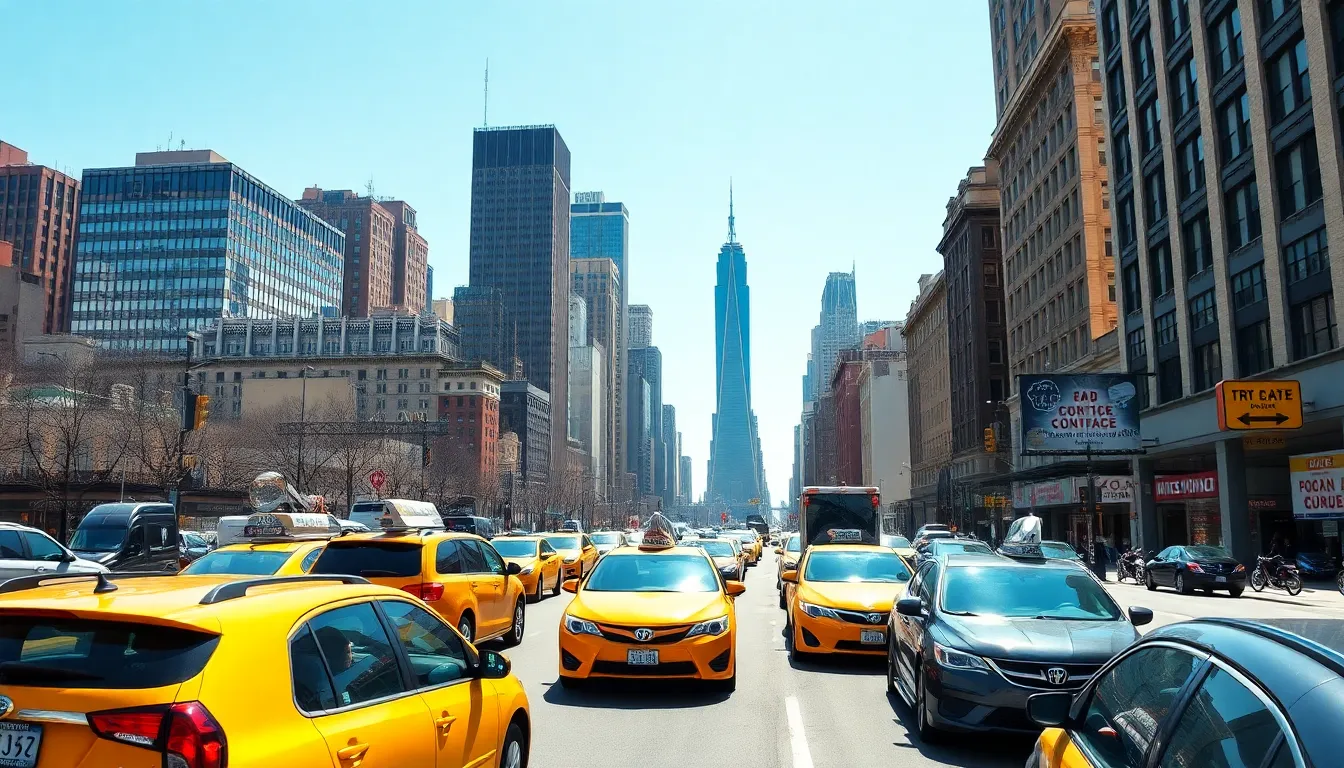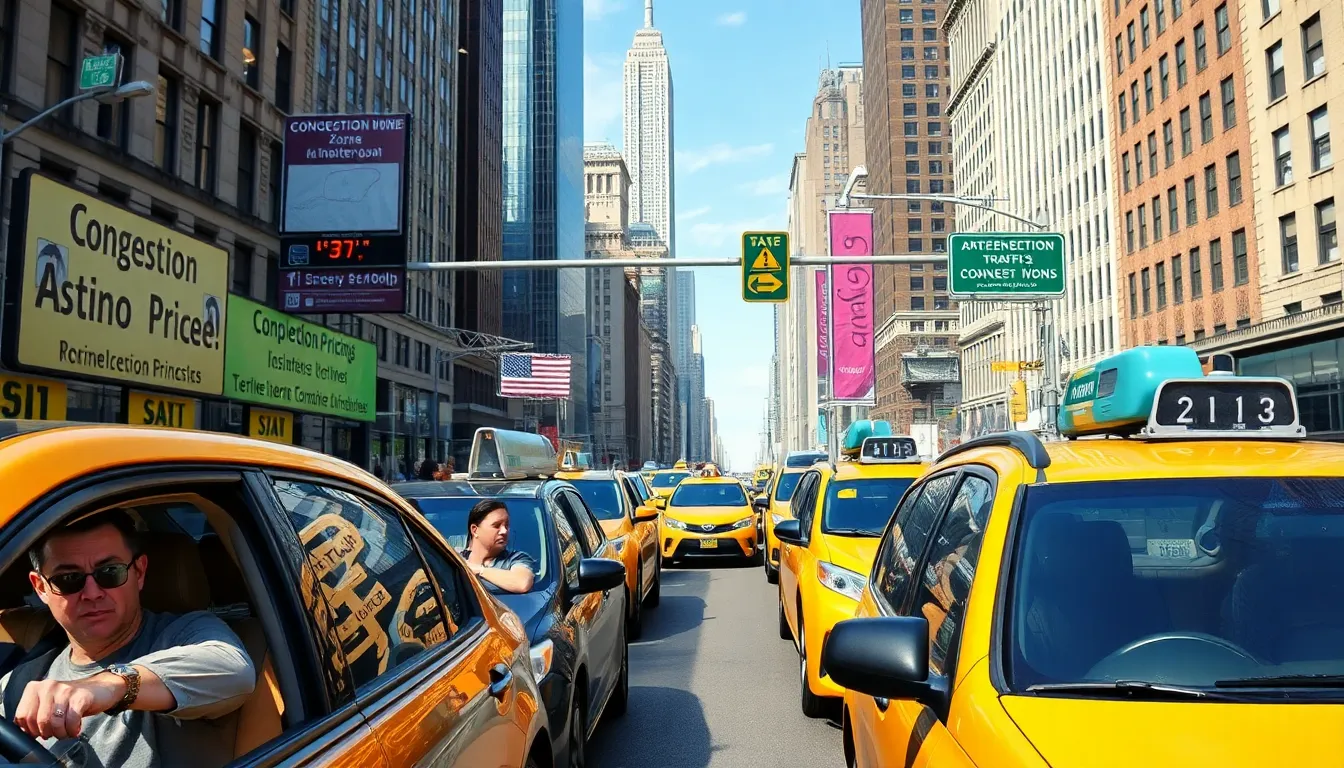In the bustling maze of city life, congestion pricing is the toll that promises to ease the gridlock while giving drivers a reason to rethink their routes. Picture this: you’re stuck in traffic, listening to that one song on repeat for the tenth time, while the clock ticks mercilessly. But what if there was a way to smooth out those traffic jams and keep your sanity intact? That’s where congestion pricing comes in.
So how much does it really cost to avoid the chaos? The answer isn’t just a simple dollar amount; it’s a blend of factors that can make your wallet feel lighter or heavier, depending on when and where you drive. Dive into the world of congestion pricing, where every cent counts, and find out if it’s worth the price to reclaim your time and peace of mind.
Table of Contents
ToggleUnderstanding Congestion Pricing
Congestion pricing aims to reduce traffic congestion in urban areas by charging vehicles for entry into high-traffic zones during peak hours. It operates on the principle that financial disincentives motivate drivers to adjust their travel behavior. Drivers face variable fees based on congestion levels, time of day, and specific locations.
The cost structure varies widely depending on the city and program implementation. For example, New York City’s congestion pricing plan may charge up to $23 for larger vehicles entering Manhattan during busy times. Meanwhile, other cities, such as London, implement daily charges of around £15 for non-residents in designated zones.
Traffic patterns and commuter behavior significantly influence how effectively these pricing schemes work. Research indicates that, when properly structured, congestion pricing can reduce traffic volumes by approximately 10% to 25%. Consequently, this reduction leads to improved travel times and decreased vehicle emissions.
Stakeholders often debate the fairness of congestion pricing. Concerns about its impact on low-income drivers arise, as these individuals may face financial difficulties affording additional fees. To address this, some cities offer exemptions or discounts for low-income residents and public transit users.
Experts emphasize the potential benefits of such programs. Reduced congestion not only saves time for drivers but also enhances air quality and promotes the use of alternative transportation modes. Ultimately, congestion pricing serves as a critical tool in modern urban planning efforts, aiming to balance economic growth with environmental sustainability and quality of life.
Factors Influencing Pricing

Congestion pricing relies on several key factors that can significantly affect costs for drivers. Understanding these factors helps clarify why charges differ across locations and times.
Geographical Variation
Pricing varies widely based on geographical factors. Cities like New York employ higher rates, charging up to $23 for larger vehicles entering Manhattan. In contrast, London imposes around £15 for non-residents. Additional variables include the specific traffic patterns and infrastructure within each city. Diverse urban designs lead to unique congestion challenges, prompting different pricing strategies. Commuters might encounter reduced fees in areas with less congestion or during lower-demand periods.
Time of Day Considerations
Time significantly influences pricing structures. Peak hours typically see the highest charges as traffic volumes surge. Rates may rise substantially during weekday mornings and evenings, encouraging drivers to adjust their travel times. Meanwhile, off-peak hours can offer lower or no charges to incentivize travel during less congested times. This dynamic pricing approach aims to balance road use effectively across different times of the day. Understanding these patterns aids drivers in planning their routes, potentially saving money while reducing congestion.
Breakdown of Costs
Congestion pricing involves various costs that contribute to the overall financial impact on drivers. Understanding these fees aids in grasping the complete picture of congestion pricing.
Base Fees
Base fees represent the primary cost associated with congestion pricing. For example, New York City may charge up to $23 for larger vehicles entering Manhattan during peak times. This fee varies based on vehicle size and location. Cities often establish these base fees based on local traffic patterns and congestion levels. In London, a consistent daily charge applies to non-residents, which amounts to approximately £15. Base fees ensure that drivers consider the financial implications of traveling in congested areas.
Additional Charges
Additional charges complement base fees and depend on specific driving conditions. For instance, varying costs can occur depending on the time of day, with peak hours prompting higher fees. Weekend travel may also come with reduced rates to incentivize off-peak travel. Some cities incorporate charges for exceeding posted time limits in congestion zones. These added fees aim to discourage prolonged stays in already busy areas, enhancing overall traffic flow. Understanding these additional charges helps drivers prepare for potential costs while navigating high-traffic zones.
Benefits of Congestion Pricing
Congestion pricing significantly reduces traffic congestion during peak hours. By charging drivers for entry into crowded urban areas, cities promote alternative transportation methods. Traffic volume decreases, resulting in improved travel times for all users.
Environmental benefits are another key advantage. Research shows a reduction in vehicle emissions by 10% to 25% when congestion pricing is implemented effectively. Cleaner air contributes to better public health outcomes, particularly in densely populated regions.
Revenue generated from congestion pricing often funds public transit improvements. Cities can enhance bus and subway services, making them more attractive options for commuters. Enhanced public transportation promotes broader accessibility and mobility.
Congestion pricing encourages efficient land use. As drivers avoid high-cost zones, urban planners can prioritize green spaces and pedestrian-friendly areas. This leads to more livable cities where walking and biking become safer and more enjoyable.
Economic activity can also see a positive impact. With reduced traffic delays, businesses experience improved productivity and increased foot traffic. Vibrant commercial areas flourish as people can navigate urban spaces with greater ease.
Equity considerations are central to discussions surrounding congestion pricing. Many cities implement exemptions or reduced rates for low-income drivers. This approach ensures that the system is fair and accessible while still achieving its primary goals.
Investment in smart traffic management systems proliferates alongside congestion pricing. These technologies optimize traffic flow and adjust pricing dynamically based on real-time conditions. Increased efficiency enhances the overall effectiveness of urban transportation networks.
Critiques and Challenges
Critics often argue that congestion pricing disproportionately affects low-income drivers. Concerns arise from the financial burden placed on those with limited budgets who rely on vehicles for commuting. Exemptions and discounts serve to lessen this impact in some cities, yet debates continue on their effectiveness.
Arguments around congestion pricing also focus on perceived fairness. Critics question whether this approach truly prioritizes equitable treatment for all commuters. They highlight that without adequate public transportation alternatives, congestion pricing may push low-income drivers into difficult situations.
Implementation challenges frequently emerge, particularly regarding technology infrastructure. Cities require sophisticated systems to monitor traffic and adjust pricing accurately, demanding significant upfront investment. Delays in these implementations can hinder the expected benefits of congestion pricing.
Public resistance poses another challenge. Many people feel skeptical about new pricing schemes, viewing them as yet another tax. Effective communication about benefits, such as reduced congestion and improved air quality, is essential for gaining public support.
Intercity variations further complicate the discussion. Different cities face unique traffic patterns and challenges, leading to divergence in pricing strategies. Although some cities have seen success, others may struggle to achieve similar outcomes, underscoring the need for tailored approaches.
Negative perceptions also linger about potential revenue usage. Mistrust exists regarding whether funds generated from congestion pricing will directly benefit public transit improvements. Transparency in financial allocations is crucial to address these concerns and build public confidence.
Overall, while congestion pricing offers promising benefits, several critiques and challenges require careful consideration. Addressing issues of equity, technological readiness, public acceptance, and revenue allocation strengthens the foundation for implementing effective congestion pricing solutions.
Congestion pricing presents a viable approach to tackling urban traffic woes while promoting more sustainable travel habits. By implementing charges for high-traffic zones during peak hours, cities can encourage drivers to rethink their routes and reduce congestion. The financial implications vary significantly depending on location and vehicle type, but the potential benefits are substantial.
As urban areas grapple with increasing traffic and environmental concerns, the effectiveness of congestion pricing hinges on careful planning and public acceptance. Addressing fairness and providing alternatives for low-income drivers is crucial to ensure a balanced implementation. Ultimately, congestion pricing could serve as a vital component of modern urban strategies aimed at enhancing mobility and improving overall quality of life.



